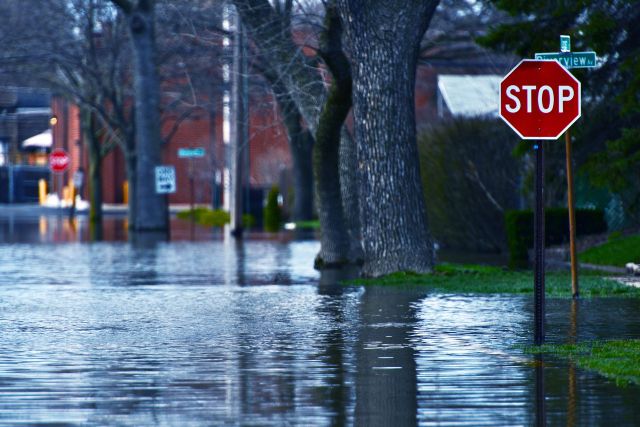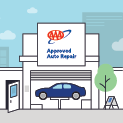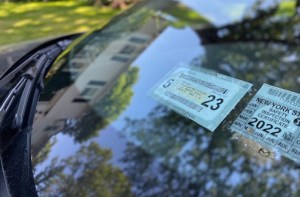If you’re shopping around for a used vehicle, there’s a good chance you are going to come across a flood-damaged car, whether you realize it or not.
Insurance companies often declare flood-damaged vehicles as total losses, and those cars are then sold to salvage companies. However, rather than being dismantled for parts, some of these vehicles are purchased by individuals who restore them to some degree of working order. AAA warns car buyers that water-damaged vehicles can be transported anywhere for resale.
Thousands of flooded cars make their way back to the used car market each year and that number often increases following hurricane season and major floods.
Signs of a Flood-Damaged Car
So, how do you know if you’re on the verge of buying a flood car? Start with the vehicle’s description. It may be referred to as “storm-damage” and could have a new title indicating it was an insurance total. Car history reports can help, but only if the car was put through a claim process.
Here are some other ways to check for water damage:
- Inspect the car thoroughly for rust stains inside the car, especially around seat brackets.
- Use all your senses. Does the car smell like mold/mildew? Conversely, does it smell like someone is trying to cover something up?
- Check for carpet or upholstery that has been replaced or recently shampooed. Pull back the carpet at different areas and look for mud, dirt, rust or water stains.
- Look in the trunk and under the spare tire. On a SUV, lower the spare tire and look for mud and debris. If the spare tire looks like it was just steam-cleaned, be suspicious. A spare tire that has been under a vehicle for a few years should be dusty, not caked with mud or spotlessly clean.
- Is there mud and dirt on the underside of the dashboard? This area is hard to clean.
- Look for water in the headlights and taillights.
- Rust on the underside of the vehicle. Corrosion is uncommon in newer vehicles and those that are owned and operated in warmer climates.
- Open the hood and look for water stains, mud and dirt in nooks and crannies (the alternator, cooling fan and other surfaces).
- Check the fuse boxes for signs of corrosion.
- Are the electrical components, such as lighting, heating/AC fan and window motors, not functioning properly?
- Look for rust, mud, dirt or discoloration in body seams and small out-of-the-way crevices on the doors, under the hood and inside the trunk. Rust on unpainted screws indicates moisture.
- Check all the fluids. If they are a milky color this could indicate water contamination.
- If all of the windows have condensation on a warm day, it could indicate the interior was flooded.
- A technician or even a do-it-your-selfer can check for engine fault codes. If the fault codes were recently cleared, this could indicate someone trying to hide something.
- Some states do a better job of identifying cars with reconstructed titles. If you are looking at a local car and it has a recent out-of-state title, be wary and ask lots of questions.
- Finally, if the price looks too good to be true, it probably is.

What Happens if Your Car Was Caught in a Flood?
If you are caught in a few inches of water, your car will most likely be fine. If the water leaked into the vehicle’s interior, however, there may be real trouble.
Here are some tips and steps to take if your car becomes flooded.
- Call your insurance company to check on coverage.
- Take plenty of photos to document the damage.
- Don’t start the car. Have it towed home or to a repair shop to be evaluated.
- If the water was fresh (not brackish or salty) and the engine was off, you may be OK.
- Driving into deep water could cause the engine to hydro-lock and cause extensive damage. When the engine sucks in water, that water can’t be compressed and will damage internal engine components.
- Don’t start the car until it has fully dried out. Even though cars today have lots of computers, allowing the car to fully dry out may save all the expensive electronics. Think of a wet cellphone – sometimes if it is allowed to dry out, it will be OK – and so may your car.
- The interior should be thoroughly cleaned and the carpets removed to fully dry out. This will help eliminate any mold or mildew.
- Change all the vital fluids. They may be contaminated by water.
- When in doubt have the vehicle evaluated by a reputable repair shop.
Have a question about flood-damaged cars? Leave them in the comments below.
Get a pre-purchase inspection by a trusted mechanic. Locate a AAA Approved Auto Repair facility near you.
One Thought on “Be on the Lookout for Flood-Damaged Cars”
Leave A Comment
Comments are subject to moderation and may or may not be published at the editor’s discretion. Only comments that are relevant to the article and add value to the Your AAA community will be considered. Comments may be edited for clarity and length.













The problem is that flood damaged cars end up on the market without a paper trail to identify them. A flood damaged car can be transported to another state, sold at auction, and after the buyer/dealer does cosmetic repairs, sold as an undamaged car with a new title. I have always advocated for Federal registration of vehicles so that the cars have a history under one permanent number no matter which state they came from. Individual states could still set their own rules for vehicle inspection, etc., and charge licensing fees, but at least the history of the car couldn’t be obscured by re-registering it in another state. Also, the penalties for falsifying information about the vehicle’s history must be toughened. Don’t do the crime if you can’t do the time!